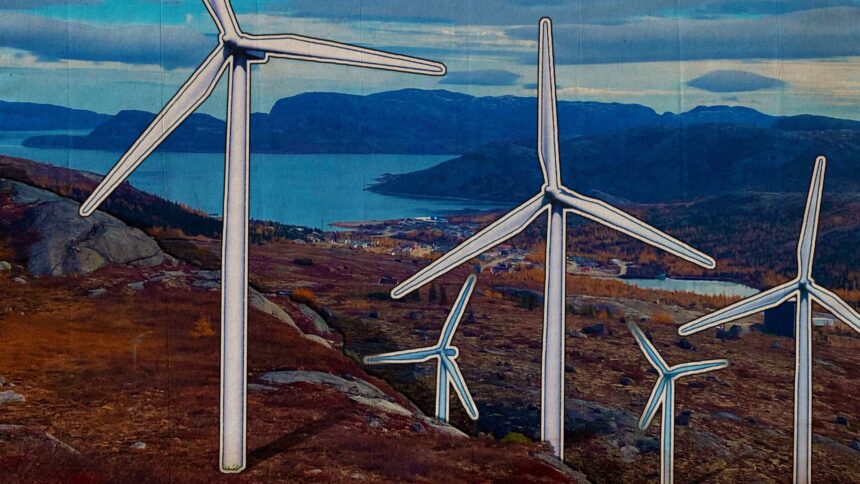The remote Inuit community of Nain is poised for an energy revolution as federal and provincial governments commit $3 million toward establishing a groundbreaking clean energy microgrid. This investment marks a critical step in the community’s journey to break its long-standing reliance on diesel power, addressing both environmental concerns and economic challenges that have plagued Labrador’s northernmost permanent settlement for decades.
“This isn’t just about replacing diesel generators with solar panels,” explains Johannes Lampe, President of Nunatsiavut Government. “It’s about energy sovereignty for our people and creating a sustainable future that honors our relationship with the land while providing reliable power to our homes and businesses.”
Located along Labrador’s rugged northern coast, Nain’s approximately 1,100 residents have historically depended on diesel shipments that arrive just once annually during the brief ice-free shipping season. This precarious supply chain has left the community vulnerable to fuel shortages, price volatility, and the ever-present risk of environmental contamination from fuel transport and storage.
The newly announced funding will support a comprehensive energy transformation featuring a 650-kilowatt solar array complemented by a 2-megawatt battery storage system. This integration of renewable generation with advanced storage technology will allow Nain to maintain reliable power even during the dark winter months when solar production diminishes.
Energy security experts point to Nain’s initiative as a potential blueprint for Canada’s numerous remote communities still dependent on diesel. According to Natural Resources Canada, over 200 remote communities across the country rely primarily on diesel generation, consuming approximately 680 million liters of diesel annually for electricity.
“What’s happening in Nain represents the future of energy in northern communities,” says Dr. Emily Richardson, Director of Clean Energy Transition at the University of Toronto. “The technology is finally catching up to make these systems viable even in harsh Arctic conditions, and the economics increasingly favor renewables over diesel importation.”
The economic benefits extend beyond reduced fuel costs. The project is expected to create at least 15 permanent technical positions for local residents, with training programs already underway to ensure community members can operate and maintain the new infrastructure. This workforce development component addresses a critical aspect of Canada’s broader energy transition strategy, which aims to create sustainable employment opportunities in communities most affected by changing energy systems.
Provincial Minister of Energy Resources Thomas Bennett emphasized the broader implications: “This project demonstrates our commitment to supporting Indigenous-led clean energy initiatives that provide environmental, social, and economic benefits. The lessons learned in Nain will inform similar transitions across Newfoundland and Labrador and potentially throughout Canada’s North.”
The initiative hasn’t been without challenges. Early feasibility studies revealed technical hurdles related to Nain’s extreme weather conditions, where temperatures can plummet to -30°C and prolonged periods of darkness limit solar generation potential. Engineers addressed these concerns by incorporating redundant systems and oversizing the battery storage capacity to ensure reliable operation year-round.
Community consultations have been integral to the project’s development. Local knowledge about seasonal patterns, specific energy needs, and cultural considerations have shaped the design process. Traditional knowledge holders provided insights about historical weather patterns and optimal siting for infrastructure to minimize disruption to important cultural and hunting areas.
“For generations, we’ve watched diesel barges approach our shores, bringing fuel that powers our homes but also representing our dependence on outside systems,” says elder Sarah Townley. “This project begins to restore balance, allowing us to harness the energy that has always surrounded us.”
As world leaders increasingly focus on climate resilience in vulnerable communities, Nain’s microgrid represents a tangible example of adaptation strategies taking root in indigenous territories. The project aligns with Canada’s commitment to support Indigenous climate leadership while advancing national emissions reduction targets.
Construction is scheduled to begin next spring, with the first phase expected to be operational by late 2025. The complete transition from diesel dependency is anticipated by 2027, contingent on successful implementation of each project phase.
As communities across the Arctic face similar challenges with fossil fuel dependency and climate vulnerability, one question remains particularly relevant: Will Nain’s microgrid success story catalyze a wider transformation of energy systems across Canada’s remote northern communities, or will unique local circumstances limit the replicability of this promising model?










